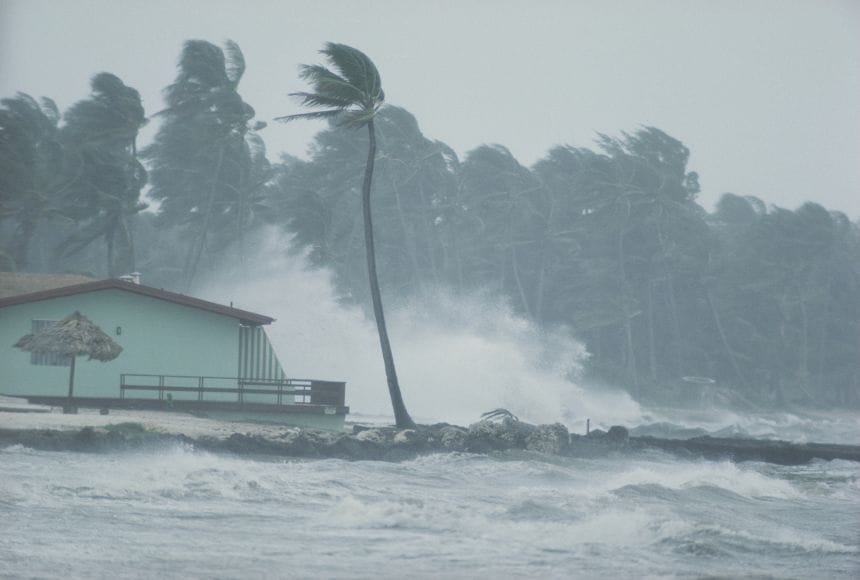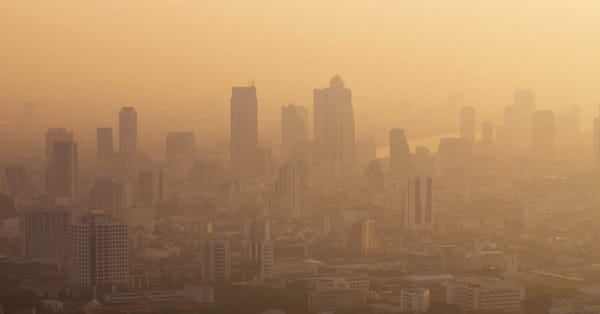Typhoons, Floods, and Inequality: The Human Cost of Climate Change
We explore the human cost of typhoons and floods, focusing on how they disproportionately affect people in SEA, especially in the context of governance and inequality.

In Southeast Asia (SEA), the presence of natural disasters such as typhoons and floods is varied and ever-present throughout the years, and is exacerbated by climate change. These events have increasingly devastating effects on communities, with the most vulnerable populations often bearing the brunt of the destruction. The interplay between natural disasters and inequality is starkly visible in SEA countries, where governance failures, lack of preparedness, and socioeconomic disparities significantly worsen the outcomes of such catastrophes. In this article, we will explore the human cost of typhoons and floods, focusing on how they disproportionately affect people in SEA, especially in the context of governance and inequality.
In this article, we will explore the human cost of typhoons and floods, focusing on how they disproportionately affect people in SEA, especially in the context of governance and inequality.
Disasters in Southeast Asia: Examples and Unequal Impact
Southeast Asia is particularly prone to extreme weather events due to its geographic location and climatic conditions. Countries like the Philippines, Vietnam, Myanmar, and Bangladesh are often hit by powerful typhoons, cyclones, and floods. These natural disasters have devastating consequences, but their impact varies depending on the vulnerability of the affected populations.
In November 2013, Typhoon Haiyan was one of the strongest storms ever recorded, and it devastated large parts of the central Philippines. While the destruction was widespread, the poor, informal settlements along coastal areas were hardest hit. The poorer communities, lacking the resources to evacuate or rebuild, faced prolonged suffering. In contrast, wealthier Filipinos, often living in more secure areas, were better able to recover from the storm in a shorter time frame.
Similarly, in 2017, Typhoon Damrey in Vietnam led to massive flooding and landslides, displacing tens of thousands of people. We also saw the impact on rural and impoverished communities, which were disproportionately affected. These people often live in flood-prone areas with little infrastructure or support, making them more vulnerable to the impacts of such disasters. Similarly, populations nearer to urban centers or those with access to better infrastructure were better able to protect themselves and recover faster.
These examples highlight the deep inequalities in disaster response and recovery. While a disaster like Typhoon Haiyan can cause widespread damage, the poorest segments of society are more likely to experience the worst outcomes, including loss of life, displacement, and prolonged poverty.
Governance Failures and the Lack of Proper Rescue Plans
A significant factor contributing to the unequal impacts of natural disasters is the lack of effective governance and preparedness. In many SEA countries, poor governance and insufficient disaster response plans contribute to delayed or inadequate relief efforts.
For instance, the 2004 Indian Ocean Tsunami demonstrated how poor governance can exacerbate the human cost of natural disasters. Countries like Indonesia, Thailand, and Sri Lanka were severely impacted, with hundreds of thousands of lives lost. In Indonesia, the government’s slow response, poor coordination, and lack of preparedness hindered recovery efforts. In the SEA region, we often see a lack of well-coordinated and transparent disaster response mechanisms. This leaves communities without adequate resources during emergencies. The absence of clear evacuation routes, insufficient early warning systems, and poor infrastructure make it difficult for people in vulnerable regions to survive and recover from such disasters.
Cyclone Nargis: A Tragedy Amplified by Governance Failures
One of the most tragic and deadly cyclones to hit Southeast Asia was Cyclone Nargis in 2008, which struck Myanmar. The cyclone caused widespread devastation, particularly in the Irrawaddy Delta, one of the country’s most impoverished regions. Official estimates suggest that over 138,000 people died, but there could be more than these figures in reality, with thousands more missing and multiple villages wiped out entirely. However, the actual human cost of Nargis was amplified by the Myanmar military regime's response-or lack thereof.

The Myanmar military government, which had been in power since 1962, was notorious for its secrecy, lack of transparency, and reluctance to engage with the international community. When Cyclone Nargis hit, the government's slow and ineffective response contributed to the escalating human tragedy. The military regime did not even make any announcements or warnings about the incoming cyclone, and it was hesitant to accept foreign aid afterwards, fearing international scrutiny and a loss of control. It wasn't until much of the destruction was already done that relief efforts began, and by then, many lives had already been lost.
The lack of effective governance, coupled with widespread poverty and inadequate infrastructure, left vulnerable populations exposed to the worst effects of the disaster. The military regime's failure to coordinate a swift and organized rescue effort resulted in delays in evacuations, insufficient food and medical supplies, and a breakdown in the distribution of aid. Consequently, thousands of people died from hunger, preventable diseases, and lack of medical care, even though they could have been saved with a more effective response.
This tragedy underscores how governance failures, in addition to the natural disaster itself, can drastically increase the human cost of cyclones and floods, particularly in countries with weak institutions and political instability.
Environmental Sustainability and the Increasing Frequency of Disasters
The connection between environmental sustainability and the increasing frequency and intensity of natural disasters is undeniable. Unsustainable environmental practices, such as deforestation, urban sprawl, and poor land management, significantly contribute to the vulnerability of communities to cyclones, floods, and other extreme weather events.
In Southeast Asia, rapid urbanization, deforestation, and the destruction of natural barriers like mangroves and wetlands have worsened the impact of natural disasters. For example, clearing mangrove forests, which act as natural buffers against storm surges and flooding, has left coastal communities more exposed to the devastation of cyclones and rising sea levels. Similarly, the draining of wetlands, which serve to absorb excess water during floods, has intensified flooding in many urban and rural areas.
To combat this, a stronger focus on environmental sustainability is needed, with governments prioritizing reforestation, wetland preservation, and sustainable urban planning. Additionally, integrating climate change adaptation strategies into disaster risk management can help reduce the impact of future disasters.
Governance Reforms to Improve Disaster Response and Reduce Inequality
In addressing the unequal impact of natural disasters, there are several governance reforms that could be done to improve disaster response efforts. The first actionable item is in investing in advanced early warning systems that can predict typhoons, floods, and other natural disasters. The key factor is ensuring that these systems are accessible to all segments of society, including rural and impoverished communities.
Detailed disaster preparedness plans that include clear evacuation routes, relief distribution systems, and coordination mechanisms are also vital to improving the region's capacity for disaster response. These plans should involve local communities and be tailored to specific regional vulnerabilities to achieve a holistic approach that includes inclusivity in their disaster relief efforts. Ensuring that all communities, especially vulnerable ones, have a voice in decision-making processes is critical. Public consultations, local participation, and transparency in governance can ensure that disaster response plans are more equitable and effective for all populations.
Investing in resilient infrastructure is also key to reducing the impact of natural disasters. Targeting investments towards flood-resistant infrastructure, improved drainage systems, and building standards all improve the long-term protection from extreme weather events. We must also look into how governments in SEA can strengthen their commitment to climate change mitigation strategies to reduce the frequency and severity of extreme weather events, such as reducing carbon emissions, adopting renewable energy sources, and implementing sustainable agricultural practices.
Moving Forward
The human cost of climate change in the form of cyclones and floods is not only a result of natural forces. Still, it is deeply intertwined with governance failures and socio-economic inequality. The most vulnerable populations in Southeast Asia bear the brunt of these disasters, and to reduce the human cost of these events, governments must implement effective disaster preparedness plans, ensure inclusive governance, and build resilient infrastructure. Yet, it is essential that we address the root causes of inequality and climate change through long-term policy reforms to create a more equitable and resilient future in the region.






